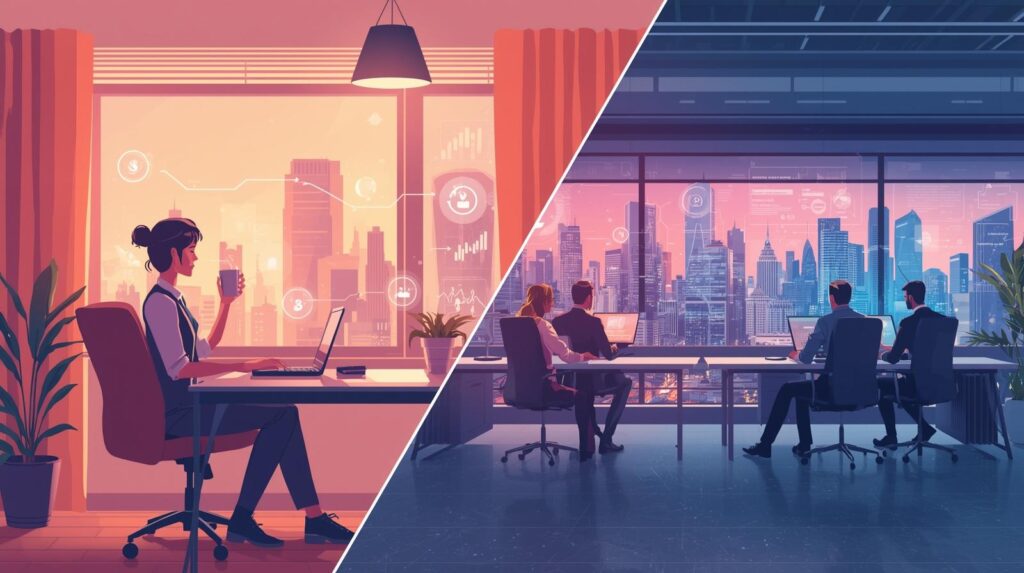Introduction
Let’s be real—finding good freelance writing jobs can feel like searching for your CNIC in a messy drawer. You know it’s in there somewhere, but the process is kind of frustrating. That’s why I started putting together these daily job lists: to save writers like you the endless scrolling.
And today, August 27, 2025, is no different. I’ve rounded up the freshest freelance writing gigs that are live right now. Think of this as your web portal of opportunities—instead of wading through outdated listings, you get the latest method of discovering gigs that actually pay.

Why Daily Job Lists Still Work in 2025
The problem is, most freelance job boards are cluttered. You log in, filter by “writing,” and suddenly you’re looking at listings from last month. Or worse, low-ball offers that aren’t even worth your coffee budget.
But the good news is: daily lists cut through the noise. You know exactly which jobs are fresh, which ones still need applicants, and which ones give you the best shot at quick approval. In fact, applying to the right job at the right time is kind of like doing a CNIC check—you’re just confirming legitimacy before diving in.
So what happens is, instead of wasting hours scrolling, you spend 15 minutes here, pick one or two jobs, and move on with your day. That’s the kind of workflow freelancers in 2025 need.
Today’s Fresh Freelance Writing Jobs – August 27, 2025
Here are today’s handpicked opportunities. They’re diverse, so whether you’re into blogs, copywriting, or newsletters, you’ll find something.
| Job Title | Type of Work | Pay Rate / Budget | Where to Apply | Notes |
|---|---|---|---|---|
| Health & Wellness Blog Writer | Long-form blog posts | $80 per article | Direct client posting | Remote, flexible hours |
| SaaS Website Copywriter | Landing page + sales copy | $120 per page | Upwork | Must have B2B exp. |
| E-commerce Product Descriptions | Short-form copy | $20 per 5 products | Fiverr | Bulk work available |
| Financial Tech Newsletter Writer | Weekly email content | $200 per issue | LinkedIn Jobs | Must know fintech |
| Ghostwriter for Memoir | Long-term project | $35/hr | ProBlogger | Ongoing collaboration |
How to Actually Land These Jobs
Okay, here’s the part most writers skip over. Finding jobs is easy. Landing them is the real challenge.
- Apply fast. Timing matters more than you think. Just like payment tracking systems update in real-time, job postings get snatched up quickly. If you wait even a day, chances are the client already has 20 pitches.
- Write human pitches. Don’t send robotic copy-paste proposals. Use casual language, maybe even mention why their project excites you. Clients in 2025 are allergic to cookie-cutter pitches.
- Check legitimacy. Just like you’d use an 8171 portal to confirm eligibility, you need to confirm your client is real. Look for a company site, LinkedIn presence, or even ask for online confirmation of their business.
- Negotiate smartly. Some rates are flexible. If you can show past work, clients often agree to bump pay.
- Follow the latest method. Platforms update their systems often—whether it’s Fiverr’s new rating structure or Upwork’s bidding credits. Stay current so you don’t lose out.
What Makes 2025 a Unique Year for Freelance Writers
You might be thinking—has anything really changed this year? Actually, yes. And it’s bigger than you’d expect.
AI-generated content has exploded, but here’s the twist: businesses are starting to realize that generic AI text doesn’t build trust. It’s like a CNIC check without a photo—it doesn’t feel authentic. So what happens is, clients are now putting more value on human-driven storytelling.
Plus, new niches have popped up in 2025:
- Podcast show notes (because audio creators need searchable text)
- AI prompt writing (yep, writing prompts is now a paid gig)
- Video scriptwriting for TikTok, YouTube Shorts, and Instagram Reels
- Localized content tailored for specific regions and languages
In fact, some of the highest-paying gigs aren’t traditional blog posts anymore. They’re niche roles that blend creativity with platform-specific knowledge.
Payment Tracking: Don’t Work Without It
Let’s talk about money for a second. Because the problem is, even when you land great jobs, some clients drag their feet on payments.
So here’s my advice: treat your income like a portal system. Always have a method to confirm if payment has been sent. Some freelancers use tools that act like an online confirmation system—real-time updates, automated reminders, and even a history log so you know exactly what’s pending.
Here’s a simple way to think about it:
| Payment Status | What It Means | What You Should Do |
|---|---|---|
| Pending | Client hasn’t processed yet | Send polite reminder |
| Processing | In review, usually 2–3 business days | Sit tight, don’t panic |
| Confirmed | Payment cleared, usually visible in your account dashboard | Mark as paid in your own tracker |
| Delayed | Past expected date | Follow up firmly, escalate if needed |
Freelancing isn’t just about writing—it’s about managing workflow like a business. And payment tracking is part of that.
Final Words
Freelancing in 2025 is both exciting and competitive. Every day, thousands of new jobs appear, but not all of them are worth your time. That’s why lists like today’s August 27, 2025 gig roundup matter—they save you time, keep you updated, and help you focus on the opportunities that actually pay.
Remember, it’s not just about finding jobs. It’s about applying fast, pitching like a human, and tracking payments with the latest methods. Do that consistently, and you’ll be surprised at how quickly your freelance career grows this year.
So don’t overthink it. Scroll back up, pick a gig, send out your application, and start building momentum today.
FAQs
Q1: Where’s the best place to find freelance writing jobs in 2025?
You’ll find jobs on Upwork, Fiverr, ProBlogger, LinkedIn, and curated daily lists like this one.
Q2: How do I know if a client is real or fake?
Always do a quick legitimacy check—just like a CNIC check. Look for an active website, reviews, or LinkedIn presence.
Q3: What’s the average pay for freelance writers in 2025?
It varies, but niche writers (fintech, SaaS, AI prompts) earn higher. Average rates are $25–$60/hour.
Q4: How can I make sure I get paid on time?
Use payment tracking tools, request partial upfront payments, and always get online confirmation of agreements.
Q5: Is freelancing still worth it in 2025 with all the AI content?
Yes—actually more than ever. Companies want authentic, human-driven writing that builds trust, something AI still struggles to deliver.










